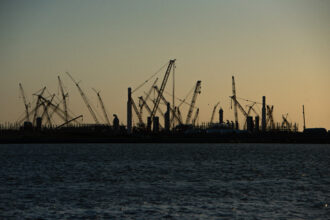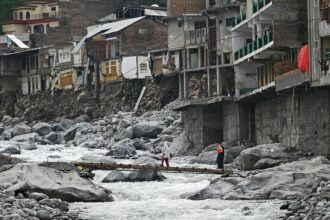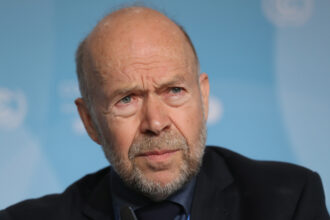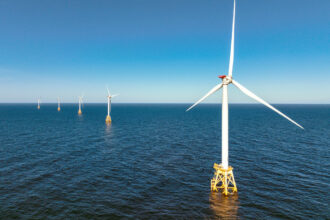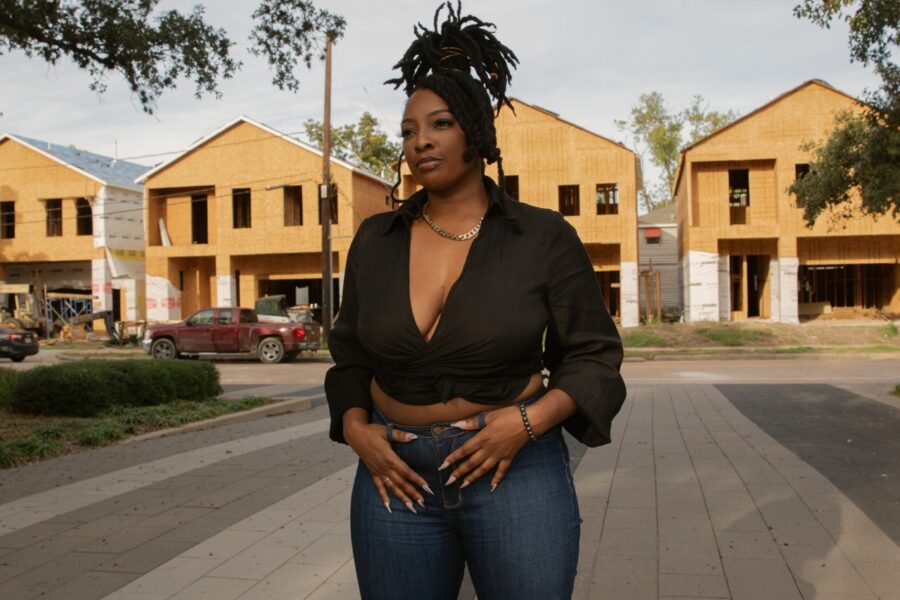Despite some last-minute wavering over specific words and the placement of commas in a key document, a State Department official said on Wednesday that the U.S. now welcomes new United Nations guidelines to set up a loss and damage fund, a key issue going into the global COP28 climate talks in Dubai.
“With clarity now concerning the final text, we are in a position to welcome the recommendations,” the official said, four days after formal U.N. committee negotiations on the loss and damage fund in Abu Dhabi ended without formal U.S. acceptance of the terms. The consensus agreement will be up for approval at COP28, which begins Nov. 30 and runs through Dec. 12.
At issue until the end was language about who will pay into the fund, the State Department official said, confirming that the U.S. did not join the consensus at the end of the meeting because it was not “sufficiently clear what the members were being asked to agree to.”
Throughout the course of the committee negotiations, the U.S. led developed countries in resisting language that would identify richer countries as the main source of funding, even though that principle is deeply embedded in the U.N. climate convention and in the Paris Agreement.
As described in the new guidelines now finally accepted by the U.S., the fund would be financed with voluntary contributions from developed countries and other sources that are mostly responsible for the climate crisis to help developing countries survive increasingly severe and irreversible climate impacts, like the loss of land to sea level rise. It also encompasses the idea of addressing losses like the destruction of important cultural sites and life-sustaining natural resources like coral reefs or forests.
At COP27 last year in Sharm El-Sheikh, Egypt, the 198 countries in the United Nations Framework Convention on Climate Change agreed to launch the loss and damage fund and authorized a 24-member committee of both developing and developed countries to draw up a detailed plan for the fund, aiming to get it up and running by the end of 2024.
The originally scheduled meetings ended in late October without a deal, but the overtime session, on Nov. 3 and Nov. 4 in Abu Dhabi, finally yielded agreement, or so it seemed until the final minutes of the meeting, when Christina Chan, the U.S. member of the loss and damage committee, questioned whether the U.S. could join the consensus and then left the room at a critical moment as the co-chairs sought to finalize the panel’s decision.
After the final gavel, Chan asked the committee chairs to communicate the U.S. reservations to the larger COP28 plenary, where the loss and damage recommendations will be up for approval. A consensus-based plan, longtime climate policy experts said, is likely to be adopted without much additional debate. But the U.S. has now dropped those reservations, the State Department official said, speaking on behalf of the U.S. delegation, but asking not to be quoted by name.
COP stands for Conference of the Parties, and the upcoming talks will involve all of the countries that signed the United Nations Framework Convention on Climate Change (UNFCCC), which came into force in 1994.
Biggest Climate Polluters Need to Step Up
Several committee members and observers said the U.S. position at the end of the two-day talks in Abu Dhabi was unclear and could have led to the loss and damage discussions being reopened at COP28, which might have delayed launching the fund.
The reticence expressed by American officials fit a historic pattern of U.S. ambivalence in the climate talks, often claiming leadership but then turning around and rejecting multilateralism completely by becoming the only country in the world to withdraw from both the Kyoto Protocol and the Paris Agreement.
Over decades of talks, and especially in the recent loss and damage discussions, the U.S. seemed to be trying to avoid the basic tenet of the U.N.’s climate convention that developed, rich countries have obligations and responsibilities toward less-developed countries which have done little to cause the climate crisis but often experience its most severe impacts, such as sea level rise, drought and increasing severe weather events.
In the most recent loss and damage discussions, the U.S. also tried to avoid or weaken any language saying that developed countries are the ones with the obligation to provide finances, said Brandon Wu, director of policy and campaigns and a climate justice expert with ActionAid, a nonprofit climate justice advocacy group, who attended the loss and damage talks as a civil society observer.
“The U.S. is always trying to erase the differentiation between developed and developing countries,” he said. “They try to weaken any language saying that developed countries are the ones with the obligation to provide finance.” The U.S. took it “a step farther” in the loss and damage talks in Abu Dhabi by rejecting language specifying that developed countries should lead on contributing to the new fund, he added.
The positions of other developed countries on the panel were similar, he said.
“As a matter of ethical principle, this is simply inexcusable,” he said “It’s like someone destroying your property and then acting indignant when you ask them to pay for it.”
The fact that developed wealthy countries of the Global North have caused most of the climate harm suffered by poorer developing countries, and that they have a responsibility to help, is enshrined in the founding documents of the UNFCCC with a phrase describing the “common but differentiated” responsibilities of all the parties.
Those nuances are the UNFCCC’s way to describe some basic principles of climate fairness, Wu said. Countries should base their fair share of climate action on how much they’ve caused the problem by historical greenhouse gas emissions, and how much wealth and resources they have available to tackle the problem. Richer countries who have emitted more should have the primary responsibility; poorer countries who have emitted less should have less responsibility.
“Did you make the mess? You should be the main one to clean it up,” Wu said. “That’s historical responsibility. Do you live in a much bigger apartment, and are much wealthier, than others who live in your building? If your building needs repairs, you should probably pitch in a bit more to help fix it.”
Part of the U.S. negotiating stance at the talks was—and has always been—predicated on the domestic political reality that Congress is likely to reject any legally binding international climate commitments.
Wu said the U.S. tries to make climate funding deals palatable to Congress, but that “the results are generally disastrous.”
“The U.S. watered down the Paris Agreement to be purely a voluntary agreement with no binding obligations on anyone, largely so that they would not need Congressional approval to ratify it,” he said. “But designing international agreements or institutions around the neuroses of the U.S. Congress is not a recipe for creating robust, effective, sustainable outcomes.”
U.S. Climate Track Record is a Mixed Bag at Best
The U.S. is the largest global donor of humanitarian aid, but has long resisted the notion that its historic greenhouse gas emissions—more than any other country’s—confer any obligation to fund climate relief efforts. As recently as at the start of COP27 last year, the U.S. was still expressing skepticism about a new loss and damage fund, instead pushing to mobilize more money through existing channels.
By the end of those talks, a shift in the U.S. position helped open the door for the current talks on actually starting the fund. But Americans’ initial ambiguity last week to the committee’s plan in Abu Dhabi once again raised fears that the country might turn its back, said Lien Vandamme, observing the loss and damage process for the nonprofit Center for International Environmental Law.
“It’s unclear whether it means they will want to open it up at COP28, or if it just means that they are just going to completely disengage from the loss and damage fund,” she said. “That would not be a surprise seeing that they have not delivered on their commitments to the Green Climate Fund, so why would a loss and damage fund be different?”
The Green Climate Fund was established in 2010 to spur equal investments in adaptation measures to prepare for the impacts of climate extremes, and in mitigation, to lower the greenhouse gas emissions that cause warming. The new loss and damage funds will be aimed at irreversible impacts that can’t be adapted to or mitigated for, and disbursed in response to climate disasters.
Vandamme said developing countries, although also unhappy with parts of the new loss and damage plan, probably would not accept an effort to re-open discussions at COP28, or efforts to “further water down the text when it comes to responsibilities to pay.” If the U.S. goes down that path, she said, it could severely undermine trust in the COP 28 negotiations and block progress in other areas of focus, like finding common ground for a fossil fuel phaseout.
“Once this gets opened up at COP, it becomes a much bigger discussion,” she said. “You’re going from 24 to 200 countries and many other topics in the game, and that makes it complicated.”
But, she added, the U.S. can run, but can’t hide from the core principle of the 1992 climate convention that all states have to act to address the climate crisis, with the recognition that not all states can do so at the same pace.
“There is this element of historic responsibility and there is this element of capabilities,” she said. “According to these principles, rich polluting countries have to take the lead in addressing the climate crisis, cutting emissions faster, and also by taking the lead in supporting developing countries.”
The State Department said it will continue to work on the loss and damage fund to ensure that it draws from the widest range of sources, including carbon markets and international pricing mechanisms that can complement grants and concessional loans from public and private sources,the official said.
The State Department will also try to find ways to streamline access to loss and damage funding for developing countries, including direct budgetary support, the official said, adding that the U.S. proposed including non-UNFCCC parties like Indigenous Peoples, civil society groups and climate migrants on the board of directors of the new fund. But that was not included in the final recommendations from the committee.
The record shows that U.S. actions are often different than its words, as its efforts to weaken global climate action started early in the U.N. process in 1997 at COP 3. During negotiations leading to the Kyoto Protocol, American negotiators downgraded a clean development compliance fund that was an early version of today’s carbon offset market, and also pushed for emissions trading and other flexible carbon market mechanisms that all collapsed in 2012 when the global price of carbon crashed.
This story is funded by readers like you.
Our nonprofit newsroom provides award-winning climate coverage free of charge and advertising. We rely on donations from readers like you to keep going. Please donate now to support our work.
Donate NowPresident Bill Clinton signed the Kyoto Protocol in 1997, but the Senate failed to ratify it. U.S. involvement in the global climate talks spurred a domestic bipartisan political backlash that resulted in the Byrd-Hagel Resolution, which rejects any treaty with new commitments for greenhouse gas reductions unless all countries are included, or if such a treaty were to “result in serious harm to the economy of the United States.”
In 2001, President George W. Bush withdrew the U.S. signature from the Kyoto Protocol, which, according to environmental historians, is consistent with U.S. practice of not signing or ratifying other major international agreements, including the U.N. Convention on the Law of the Sea, the Convention on the Rights of the Child, the Convention on the Elimination of All Forms of Discrimination Against Women, the Mine Ban Treaty, the Convention on the Rights of Persons with Disabilities, the Convention on Cluster Munitions, and the Optional Protocol to the Convention against Torture. The U.S. has also refused to become a party to the International Criminal Court.
In 2007, the U.S. weakened the Bali Action Plan by insisting that the language include a reference to “commitments and actions” by developed countries, as a way to avoid potentially legally binding commitments.
In 2009 at COP15 in Copenhagen, widely viewed as a failure, President Obama announced the Copenhagen Accord, a non-binding deal that sidestepped the formal U.N. process, and then left the conference before the text was even circulated to the 140 countries participating in the talks.
A few years later in 2013, at COP19 in Warsaw, the U.S. pressured the rest of the parties to accept the idea of voluntary, nationally determined contributions as a way to avoid, once again, commitments to internationally set binding mitigation targets. And a year after that, documents leaked by Edward Snowden showed that the U.S. spied on other countries at the 2009 talks, further undermining trust in U.S. climate policy.
All the time wasted with political wrangling comes at a price, said Daniel Lund, a climate advisor for Fiji from the United Kingdom who was one of the members of the committee that hammered out the loss and damage plan over the past year. Many small island nations in the Pacific are “already at their adaptation limits, and the solutions are increasingly starting to look quite difficult.” That’s where the new loss and damage funding would help, he added.
“In Fiji, we have more land area than than many others affected by sea level rise and storms, but we’ve already begun relocating communities,” he said. “One of the communities that we’ve had to move has been in the same place for 500 years. We set up a relocation trust fund and we have a robust policy framework,” but there is not enough funding to fully implement those plans, he said.
The problems are even more acute in smaller island nations like the Marshall Islands or Tuvalu, “where the actual potential habitability of the country in 10 to 15 years time is in question,” he said.“In the Pacific this is so fundamental to thinking about the future. There’s loss and damage locked in for us even if we reduce emissions to zero tomorrow.”







